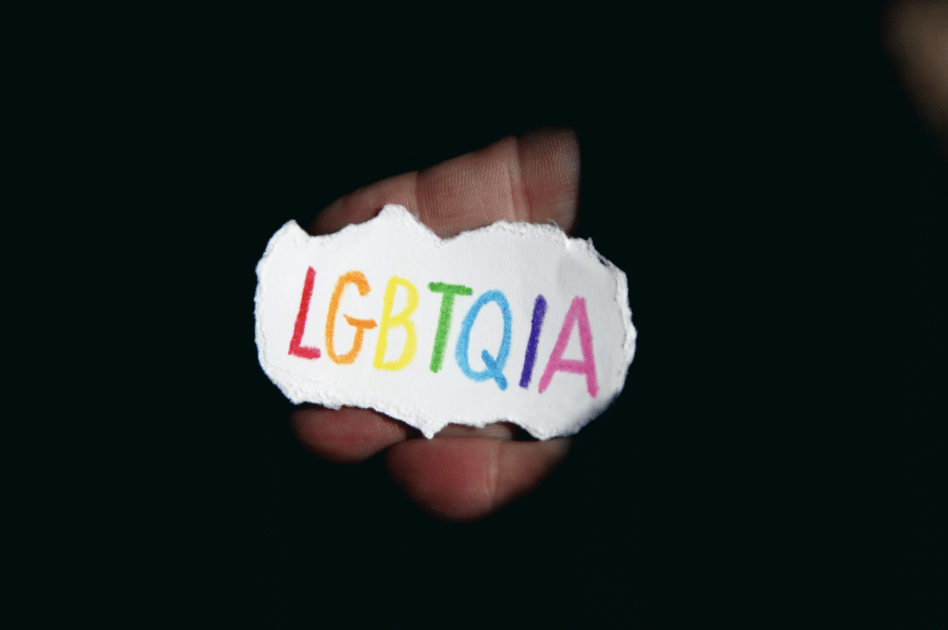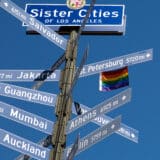
“I only said or did that because I love and care for you”
“What are you talking about? That never happened.”
“It’s all in your head, you must be mistaken.”
“It was just a joke, you’re taking it too seriously!”
Probably at some point in people’s lives, they’ve heard statements akin to these lines. It often leaves us questioning our reality and our emotions, and makes us think: “was I overreacting?” or “was I making it all up?”.
No, you’re not making it up and you’re not overreacting. In fact, what you’re experiencing is gaslighting, a form of psychological abuse wherein a person or a group makes the individual question their sanity, perception of reality, or memories.
As a result of this, the person would often be left confused, anxious, and distrustful of their memory and reality.1
How did the term gaslighting emerge?

Again, gaslighting shouldn’t be taken lightly since it’s a form of psychological abuse.
According to dictionary.com, the term ‘gaslighting’ emerged from a 1938 play entitled Gas Light by Patrick Hamilton which was later adapted into a film in 1944.
In summary, the story revolves around a conniving and murderous husband who tries his real identity from his wife. In the film, the husband made his wife think that she’s going crazy while stealing her valuable jewels.
He convinced her that she was just imagining all of these, which drove her insane.
There are other academics, however, who argue that gaslighting is more of a sociological phenomenon rather than a psychological one.
According to a journal written by Paige L. Sweet and published by the American Sociological Association, gaslighting should be seen as a phenomenon rooted in social inequalities and executed in power-laden intimate relationships.
The writer’s theory posits that gaslighting is consequential when abusers use gender-based stereotypes and structural and institutional inequalities against victims to manipulate their realities.
Who are the common victims of gaslighting?
Given these psychological and sociological perspectives on gaslighting, an important question arises: who are the usual victims of gaslighting?

WOMEN. As stated by Paige L. Sweet, gender stereotypes are primarily mobilized in terms of gendered stereotypes. 2
Sexist stereotypes that fuel gaslighting are women who are crazy, jealous, emotional, weak, or incapable, which makes it easier for them to question their realities.
Society, especially men, use this as an excuse to dismiss and invalidate their feelings and experiences. Unfortunately, women don’t just experience gaslighting in their professional lives but also in the workplace.
Of course, this is not to say that men are not victims of this abuse. Everyone can be a victim of this abuse.

CHILDREN. According to ‘The Development of Theory of Mind in Early Childhood’, social cognition is the core of children’s ability to get along with other people and see things from their point of view.
Social cognition is the person’s ability to process, remember, and use information in social contexts to explain and predict their own behaviors and that of others3, and for children, this is usually formed during their first five years.
Gaslighting in the context of a family usually transpires between a child and a parent or between an older and younger sibling.
Sometimes, these people mean well by saying “you’re being too sensitive” or “it’s not that painful”, without realizing that it’s invalidating the child’s emotions and making them question their reality.
The sad reality is that children who grew up with this may grow up not knowing how to trust their feelings and feeling that there’s something wrong with them.4
There are various reasons why parents gaslight their children, such as being a helicopter or lawnmower parent; parents who feel like they’re losing control over their child who’s developing; some to cover their own insecurities; amongst many others.
Unfortunately, gaslighting in early childhood has a long-lasting effect on the person even as an adult and can lead to mental health conditions such as depression, anxiety, personality disorders, etc.

PEOPLE OF COLOR. Gaslighting is not just based on sexist stereotypes, it’s can also be based on racial discrimination.
In a 2017 article, racial gaslighting usually happens when a person or an entity who speaks out against racial oppression or fights for racial equality is irrational, crazy, or deluded.
Gaslighting tactics under this may come in different forms: criticizing a person’s way of expressing themself to divert the attention away from the advocacy message; trivializing, downplaying, or denying racism or racist incidents; or denying historical racist events such as the Holocaust.

IMMIGRANTS. Immigrants, people who are new to a country and are unfamiliar with its laws, language, and culture are highly vulnerable to gaslighting, too.
Due to their unfamiliarity with the country’s system, it’s easier for people or entities to lie to them about their legal rights and cultural and social norms.
Examples of these are employees who manipulate their employer immigrants about their labor rights to a person playing tricks and scaring immigrants that authorities are watching them.5

LGBT MEMBERS. Unfortunately, one of the most common forms of gaslighting within the LGBT community is internalized homophobia.
It’s the tendency of some LGBT members to invalidate, marginalize, and/or oppress their own or other LGBT members’ SOGIESC and human rights.
Just like in women where it is rooted in sexist stereotypes, gaslighting LGBT members is rooted in the notions that members of the community are abnormal, shameful, undesirable, and unacceptable.6
Forms of internalized homophobia are: having feelings of shame or embarrassment when seeing other LGTB members; struggling with healthy relationships since they think that’s what they deserve because they’re LGBT, or even explicitly saying that they’re a defect since they’re not heterosexual.7
Aside from internalized homophobia, gaslighting may also come in the form of not believing that an LGBT member can’t do something based on their orientation or being surprised that they can do something despite being a member of the LGBT community.
What are the usual types of gaslighting behaviours?

There are many forms of gaslighting and many degrees to it, as well. In order to seek help and defend yourself, the person must first recognize the different types of gaslighting and if it’s happening to them.
Types of gaslighting:8
Withholding. Withholding is when a gaslighter refuses or pretends to not hear or understand the issues and/or concerns of the other person.
“What you’re saying is nonsense, I don’t have time and energy for this.”
Countering. Countering is one of the hardest ones to recognize, especially when you were raised in a dysfunctional family and grew up not trusting your reality.
Countering targets the person’s memory by distorting and denying the victim’s memory of the event. Additionally, gaslighters can also create details of the event to help their cause.
“No, I never said and/or did that. You might have misheard or forgotten what really happened.”
Forgetting/Denial. This type of gaslighting is very upfront, it’s pretending to forget events to further invalidate the victim’s memory in order to avoid responsibility.
“What do you mean? I never physically hurt you last time we fought.”
Blocking/Diversion. When victims confront their abusers, they may tend to divert the attention to another topic or twist the conversation into an argument about the victim’s credibility.
“Have you been talking to your friends again? They’re so toxic and always put negative thoughts in your head.”
Trivializing. Trivializing is making the victim believe that they are overreacting. This will consequently make the victim believe that they’re just overly sensitive and making things up.
“You’re so sensitive! This shouldn’t even be an issue, stop exaggerating the event.”
Gaslighters take full advantage of “mistakes” and “overreactions” to twist the story and make themselves victims. In worse scenarios, gaslighters sometimes even accuse the victim of being the gaslighter.
What are the common gaslighting phrases that are red flags?

You will never know at first that the person is emotionally abusive. Oftentimes they earn your trust first before they gradually gaslight you full force.
According to the article of Andersen, here are the common phrases to look out for so you would know when to walk away:
- “I never said that. You have a terrible memory.”
- “You’re too sensitive!”
- “Your friends are idiots.”
- “I’m not angry. What are you talking about?”
- “If you really loved me, you would..”
- “It’s your fault I cheated.”
- “No one else can ever love you.”
- “No, I remember that you agreed to that.”
- “This is why no one likes you.”
- “You’re gaslighting me!”
These are just the common examples, so it’s important to always be wary and be on guard to save your future self.
Why do people gaslight?

According to the book ‘The Gaslight Effect: How to Spot and Survive the Hidden Manipulation Other Use to Control Your Life’ by Dr. Robin Sten, co-founder and associate director for the Yale Center for Emotional Intelligence, people gaslight to affirm and validate themselves that they are right.
Stern posits that when gaslighters feel threatened, they resort to making other people believe and support their version of reality or events in order to maintain their sense of power and control.
Gaslighting is all about power and control.
For other people, they gaslight when they truly believe that their narrative is more valid than others and convincing others to question their own reality can and/or will give them a sense of superiority.9
Again, gaslighting is all about power and control.
What are the effects of gaslighting on the person?

Gaslighting has long-term effects, especially for children who grew up with it. Since it’s emotional abuse that involves a person intentionally causing their sanity, the victims may feel confused and powerless.
And in the long-term, the victim might experience trauma, anxiety, depression, isolation, and other psychological trauma. 10
For people in long-term relationships, gaslighting might be a gateway to other types of abuse (e.g, sexual, physical, verbal), especially once the person has internalized the gaslighting.
Since gaslighting affects a person’s self-esteem and confidence, it makes it harder for them to leave an abusive situation since they are already manipulated that the abuse is all in their mind and they are just exaggerating.
Gaslighting may also lead to broader patterns of coercive control, another form of emotional abuse, such as monitoring a partner’s activities; controlling their finances; or manipulating the partner to do unwanted sexual activities. 11
For members of a family, there are three primary types of gaslighting according to Craig Malkin, Ph.D., a clinical psychologist and author of Rethinking Narcissism, which are narrative gaslighting, emotional gaslighting, and personal gaslighting.
Firstly, narrative gaslighting is when a child remembers an incident but the parents change the story and try to convince the child that it’s really how it went.
Secondly, emotional gaslighting is when a parent invalidates a child’s thoughts or feelings.
Lastly, personal gaslighting is where a parent undermines a child’s sense of her own capacity or trust in themselves.
The effects of these primary types of gaslighting have different effects, as well– narrative gaslighting impacts the children’s ability to trust their instincts, memory, and self; emotional gaslighting can disable the child to identify and show emotions, and personal gaslighting can lead make a child undermine their self-esteem and personal trust.12
Some people think that words are just words and it holds no power, but language actually creates one’s reality. Victims of gaslighting can experience anxiety, depression, isolation, etc.
What are the stages of gaslighting?

People who experience gaslighting, especially those who are first-timers, go through three different phases:13
- Disbelief – In the first few instances of gaslighting, you are still strong in telling them that they are wrong and probably have misunderstood the situation.
- Defense – The more you are gaslighted, the more the emotional abuse tricks your brain into questioning yourself.
At this point, you will still defend yourself and disprove their statements, but you will decide to be fair and see their point of view, too. - Depression – Once you’ve been emotionally abused several times, you begin to actually believe all their statements, criticisms, and distortion of reality.
The continuous gaslighting will make you insecure and doubtful of your reality, and will eventually destroy your confidence and trust in yourself.
What to do when a person is gaslighting you?

Gaslighting is a gradual phenomenon. It builds up little by little which makes it harder for the person to detect it.
Oftentimes, people would also gaslight themselves into thinking that the gaslighting they are experiencing is all in their heads.
But once we recognize the different types of gaslighting, it’s easier now to take steps to stop it, create your boundaries, and reinforce your safe space.
According to the National Domestic Violence Hotline, the three most important steps to combat gaslighting are proof, safety planning, and self-care.
PROOF. Yes, it’s very hard to recognize if you’re being gaslighted, especially if you’ve been a victim for years.
Due to the distortion of reality, it makes it much harder to remember what happened, so it’s very handy to keep proof of the incident/s so you can rely more on concrete pieces of evidence.
For this, you can choose however you want to store your proof like keeping a secret journal containing the incident, date, and time; telling a trusted friend or family who can vouch for you and validate your experience; keeping voice memos (for those who have privacy to their phones) to record your truth; taking pictures (again, for those who have privacy over their phones) of what happened to you, your child, and other people which will indicate the date and time; and lastly, sending email to your secret account for safekeeping of voice memos, journal entries, or photos.
Recording and keeping proof of the incidents will help you trust and validate your memory and reality, at the same time, it’s useful when taking legal actions against your abuser.
SAFETY PLANS. It’s always better to have a safety plan in any abusive and dangerous situations.
This is a personal plan that may include ways to remain safe while staying in the relationship with a gaslighter; an escape plan, and actions and safety nets should you plan to leave.
If the relationship can still be saved, couple’s counseling and individual counseling may be helpful to save you and the relationship.
In terms of escape plans and having safety nets after the separation, trusted family members and friends are always there to validate and protect you.
In line with the proof step, make sure to tell your trusted friends and family members about the abuse and ask them if they are open to help in case of worst-case scenarios so you would know who to go to.
You may also reach out to local domestic violence programs, support groups, or women’s organizations for additional support and help.
SELF-CARE. Abuse is abuse no matter what the form is. Some people gaslight themselves by saying “those are just words, at least he didn’t physically assault me”, and it’s high time to change that internal dialogue and accept the truth.
The first step of self-care is telling yourself that it wasn’t your fault and you are a victim-survivor. Even if you’re still in an abusive relationship or have gone out of it, self-care is integral for your physical and mental health.
Self-care means different things to various types of people– some may see it as having a massage, indulging yourself with your favorite food, glowing up, or simply going to a museum.
But the most important self-care in this topic is thinking and processing the emotional abuse that you went through, which is the hardest part.
Sometimes self-affirmation helps other people, tell yourself every day that your instincts are right, you are not responsible for your gaslighter’s behavior, your memories and reality are valid, and you don’t deserve any forms of abuse.
Through all of these as you work on yourself, remember that you are not alone. You have friends and families, at the same time women’s organizations, shelters, and institutions that could help you.
And if you have the means to do so, seek a therapist, preferably one who specializes in domestic abuse or trauma, to heal from the trauma and abuse.























